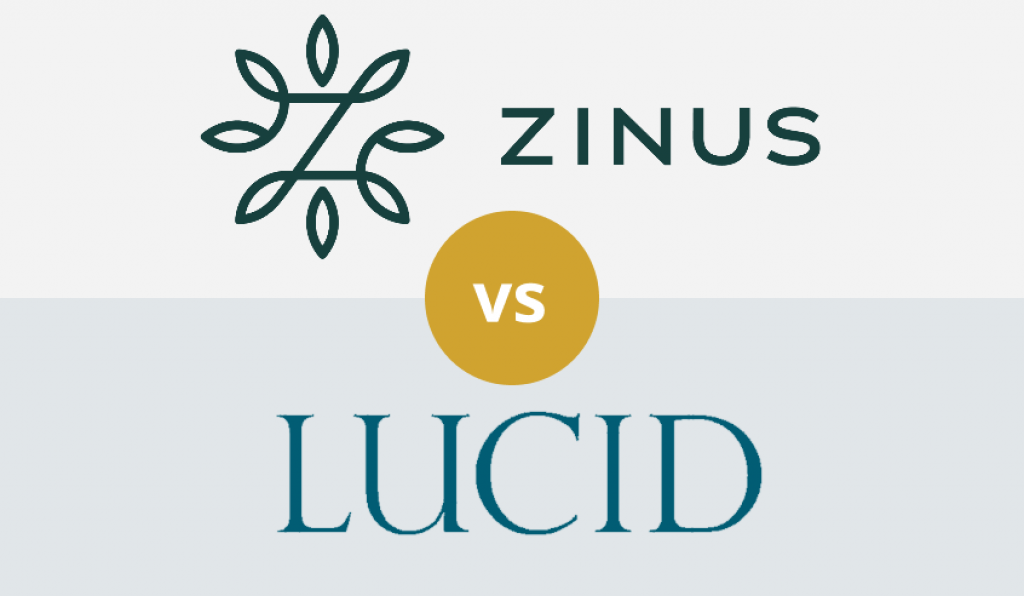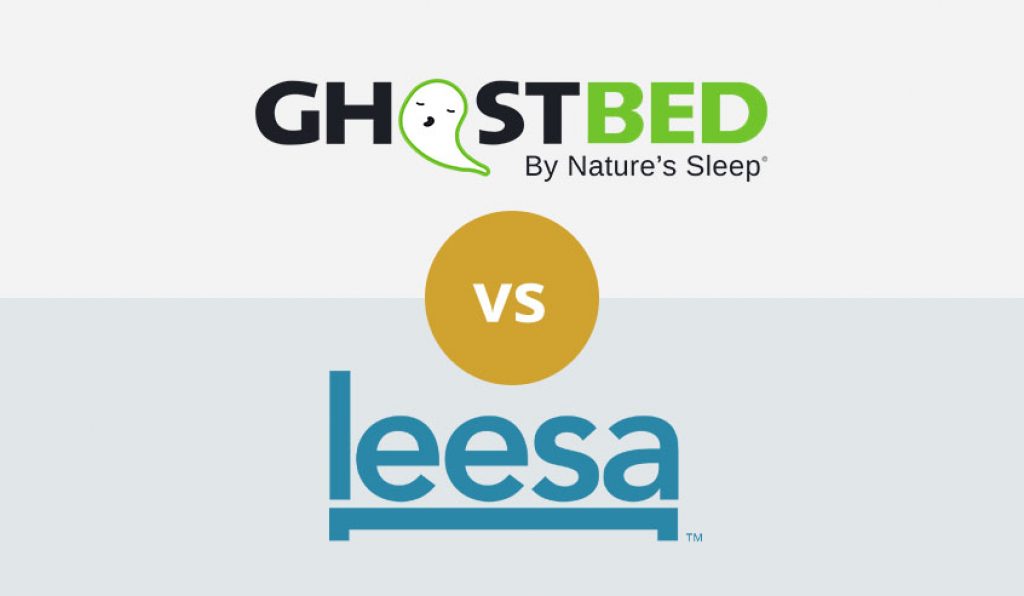

The National Institute of Environmental Health Sciences (NIEHS) and the U.S. Consumer Product Safety Commission (CPSC) require every mattress to be flame retardant to prevent any potential fire growth. These guidelines were created to ensure safety and prevent catastrophic fires that can happen from the likes of a lighted candle or cigarette.
A flame retardant mattress will often contain chemicals, which can include Polybrominated Diphenyl Ethers (PBDEs), Boric Acid, Antimony Trioxide, Decabromodiphenyl oxide, Melamine, and Vinylidene Chlorine. These chemicals can be dangerous to your health, so to be safe, people should choose a fire-retardant mattress made of wool, latex, and rayon.
This article will give you all the info you need about fire retardant mattresses. At the same time, we will be discussing the benefits and dangerous effects of flame retardant chemicals and the chemicals we need to avoid. Let’s get started!
The tag “flame retardant” can often be seen in a lot of mattresses and other furniture, which describes a layer of chemicals or natural materials to make sure that the mattress has met the flammability standards required by the NIEHS. These chemicals are applied to home furniture and other products, which work by suppressing any fire.
Some states in the U.S. have already imposed some regulations on the use of flame retardants due to other issues they can cause. This has led to a rethink about the best way to make mattresses safe to use. Flame retardant doesn’t just apply to chemicals and instead now to any material that has low flammability and passes the regulatory standards.
Chemical flame retardants can have a negative side effect on your health Trusted Source Flame Retardants Flame retardants are chemicals that are applied to materials to prevent the start or slow the growth of fire. Some of these chemicals are associated with adverse health effects in animals and humans. www.niehs.nih.gov . These chemicals can have been linked to problems with your thyroid, immune system, and neurologic function. Some might even cause cancer. The coating that was meant to protect us can ironically negatively affect our health in the long-term.
Although not all of them are harmful to your health, there are still chemicals that you should watch out for, especially the organohalogen flame retardants, which primarily contain chlorine or bromine bonded to carbon.
According to the studies Trusted Source The Role of Polybrominated Diphenyl Ethers in Thyroid Carcinogenesis: Is It a Weak Hypothesis or a Hidden Reality? From Facts to New Perspectives In the last decades, the incidence of thyroid cancer has increased faster than that of any other malignant tumor type. The cause of thyroid cancer is likely multifactorial and a variety of both exogenous and endogenous has been identified as potential risk factors. www.ncbi.nlm.nih.gov , Polybrominated Diphenyl Ethers are connected to thyroid disruption and neurodevelopmental toxicity. PDEs can also be traced in human tissue and breast milk, which can be especially harmful to babies.
Polybrominated Diphenyl Ethers have been banned in many countries since 2005. It’s unlikely, therefore, that your mattress will have PDE content in it as a mattress that old is most likely misshapen and ready to be thrown away.
No, you shouldn’t be able to, but you can find one that contains no chemicals. It’s crucial that your mattress and resist fire. The way it does that can be different from one product to the next, but some form of flame retardant is a must.
Some chemicals are still used, but these aren’t as harmful as the ones commonly used in the past. If you wanted to find a mattress without chemicals, then there are plenty of options out there. Even without chemicals, those mattresses will still have flame-retardant elements. Often this is simply using natural materials that are resistant to fire.
The Consumer Product Safety Commission Trusted Source Mattress Flammability Information | CPSC.gov The links contained on this page are to be used as a tool to help easily access an overview of mattress flammability information. Join the Mattress Information E-mail List to Receive Periodic Updates from CPSC Third Party Testing www.cpsc.gov has regulated a warning to consumers, especially pregnant women and children, to avoid using products with organohalogen flame retardants (OFRs) in them. OFR is said to be very harmful not only in neurological function but can also cause reproductive problems and hyperactivity in children.
The list of chemicals that are harmful to the human body is Polybrominated Diphenyl Ethers (PBDEs), Boric Acid, Antimony Trioxide, Decabromodiphenyl oxide, Melamine, and Vinylidene Chlorine.
The Polybrominated Diphenyl Ethers were one of the earliest materials in mattresses and sofas to prevent fire. These chemicals were added to the foam, which can then off-gas and create chemical dust. This can then get into the body.
This chemical can be dissolved in any liquid, which can cause absorption through the skin. It can also get into your body through hand-to-mouth contact. In 2005, the U.S. government banned PBDEs to the newly constructed mattresses and other home furniture.
Boric acid is a water-soluble chemical, which can be absorbed by your skin when you’re sleeping. Boric acid is also called the roach killer as it interferes with their digestive system. The Agency for Toxic Substances and Disease Registry Trusted Source Toxic Substances Portal | ATSDR Important information about toxic substances and how they affect our health. www.atsdr.cdc.gov has found out that a minimum of 2 grams in children and 15 grams in adults can be lethal.
Even though you won’t get anywhere near that exposure from a mattress, it’s something you still want to avoid. Long-term exposure to this boric acid can cause kidney cancers, infections, nausea, heart disease, and a blood vessel disorder.
Antimony Trioxide is an inorganic compound, which is also soluble in water, was considered toxic by the Environmental Protection Agency (EPA). Trusted Source TSCA Work Plan Chemical Risk Assessment Antimony Trioxide www.epa.gov When you inhale this chemical, it can also be dangerous to your health, as it causes chronic intestinal inflammation and respiratory irritation.
The usage of antimony is mostly used as the flame retardant for polymers. Antimony Trioxide is usually mixed into alloys for lead storage batteries, pipe metals, and paints, and it can also be combined with antimony salts and explosive production.
Decabromodiphenyl oxide, or decaBDE, is another flame retardant in which chemical elements are almost the same as polybrominated diphenyl ethers (PBDEs). In a review in 2006, many scientists believed that decaBDE is not a benign element compared to PBDE Trusted Source Decabromodiphenyl ether - Wikipedia Decabromodiphenyl ether (also known as decaBDE, deca-BDE, DBDE, deca, decabromodiphenyl oxide, DBDPO, or bis(pentabromophenyl) ether) is a brominated flame retardant which belongs to the group of polybrominated diphenyl ethers (PBDEs). en.wikipedia.org . However, it can be problematic, as its emissions are released from deca-BDE-containing products.
The chemicals exposure is mostly tested on birds, fish, and rats because it caused metabolic debromination occurred. In the human body, the chemical can also be found in blood samples and breast milk, which caused liver-related diseases, thyroid degradation, and breast cancer. At the same time, it can be dangerous to babies.
Melamine became controversial after many pets died Trusted Source Melamine Pet Food Recall - Frequently Asked Questions | FDA FDA and USDA continue their comprehensive investigation of pet food contaminated with melamine, and the feeding of contaminated pet food scraps to hogs and chickens. www.fda.gov in the U.S. after eating pet food made from China, which primarily contains melamine. Melamine is just the same as other flame retardant chemicals, which are soluble in water.
This chemical can be easily absorbed by the mattress and when the user lays down on his bed, it can be absorbed by the skin. The US FDA found out that when the skin absorbed melanin into the bloodstream, it will eventually interact with urine-filled renal tubules. This could result in a kidney malfunction.
Vinylidene Chlorine is the least common chemicals found in mattresses, and just the same with other chemicals, it can also be brought to the surface through wetting. With overexposure to Vinylidene Chlorine, it can cause a gradual
deterioration to the central nervous system
Trusted Source
Flame-Retardant Mechanism and Mechanical Properties of Wet-Spun Poly(acrylonitrile- co-vinylidene chloride) Fibers with Antimony Trioxide and Zinc Hydroxystannate - PubMed
To produce flame retardant poly(acrylonitrile-co-vinylidene chloride) (PANVDC) fibers with limiting oxygen index (LOI) values above 28%, flame retardants are added to fibers.
pubmed.ncbi.nlm.nih.gov
that includes sedation, spasms, and unconsciousness.
All of us need a mattress that will pass the flammability standards for safety, but it doesn’t mean that we should have to buy a product with toxic chemicals. These materials should be a means for the prevention of accidents, not a cause for potential disease.
Many mattresses and foam manufacturers now use natural alternatives to these chemicals. They can be an effective flame retardant without side effects on your body. Here we take a look at the main natural fire retardants out there.
Wool is most widely used in many home furniture because they have the innate properties of being a natural fire retardant. It has a very high ignition temperature, which is partly due to its high nitrogen and water content. It needs a huge amount of oxygen to burn, which means that it usually self-extinguishes and old smolders for a short time.
The elements and structure of wool are unique. The fiber looks like pine cones, and their scales look as if they’re rubbing each other. This unique composition is the reason why the wool can be resistant to burning.
At the same time, wool is a breathable fabric, which gives off cooler air when you’re sleeping.
Compared to flame retardant chemical-produced products, having a mattress made of wool can give you a firmer sleeping surface, which can make you comfortable all night long.
Latex is a well-known option for flame retardant mattresses. Since latex is made from a rubber tree, it is free of fire retardants. The synthetic materials are very eco-friendly as they avoid harsh chemicals.
When you pick the best latex mattress, it usually has a long warranty, which shows the quality they have. Most of them are very soft and firm that can fit your sleeping position very well. There are several benefits to sleeping on latex as it’s also hypoallergenic, eco-friendly, and low maintenance. You can also get latex pillows, which can improve your sleep.
Safety isn’t the only factor when it comes to a latex mattress. Many people also find them more comfortable than traditional mattresses. It also has pain-relieving qualities that can be aided by a latex pillow such as the OrganicTextiles Latex Contour Neck Pillow. It helps to distribute weight and minimize pressure points.
Although not all latex mattresses are 100% natural and synthetic, they can be made of diverse materials, such as the Styrene-Butadiene Rubber (SBR), which is also used as a replacement for natural rubbers. SBR is known to be chemically safe compared to PBDEs and all other flame retardant chemicals.
Our recommended pick for a latex mattress is the Linenspa 10-Inch model that boasts plushness along with excellent support.
Rayon is the regenerated fiber that is made from natural cellulose, such as wool, and is becoming increasingly popular because it can easily meet all the flammability tests. Rayon uses natural material, yet to produce it, it involves chemically-altered purified cellulose.
Although this material is not entirely natural, it is at least free from harsh chemicals that can be harmful. It can be a popular choice for sleeping products as it is soft and smooth to touch. It’s also breathable too which allows you to get a peaceful sleep.
If you look back at the history of mattress production, many mistakes have been made along the way, especially with the use of dangerous chemicals. Chemicals can still be used in mattress production, but as we’ve seen here, alternatives are available.
If you’re looking for a flame retardant mattress, then it may be the best idea to look for a natural solution. Wool and rayon are brilliant at giving you a comfortable sleep but also peace of mind that they won’t catch fire. Latex is a brilliant material for many reasons and is becoming increasingly popular for both mattresses and pillows.
When you’re next looking for a mattress, check what fire retardant it is using. If it has any of the harsh chemicals we’ve looked at here, then it’s best to look elsewhere. As we’ve seen, it’s possible to get a fire-retardant mattress that is chemical-free, safe, and comfortable.





